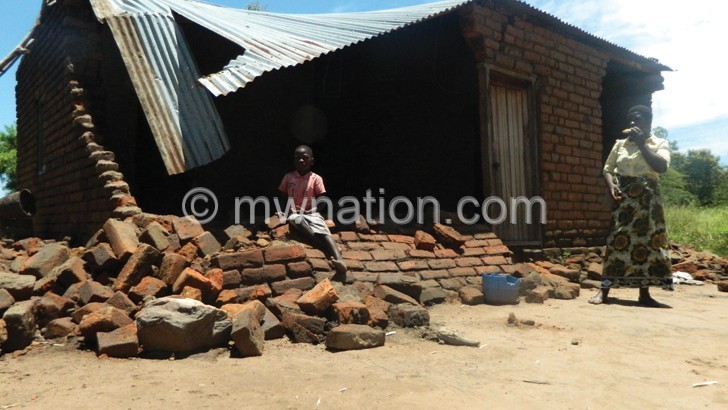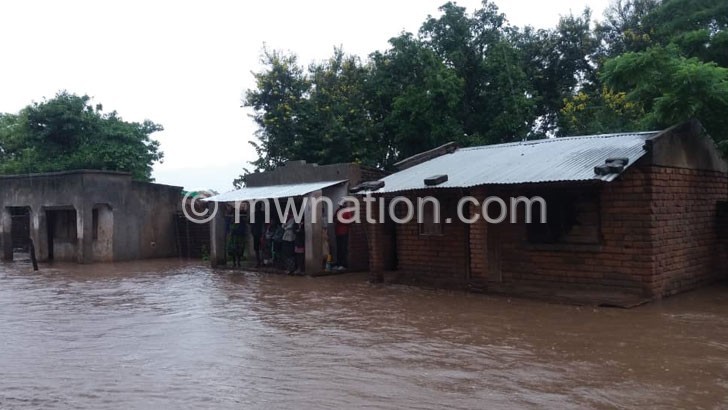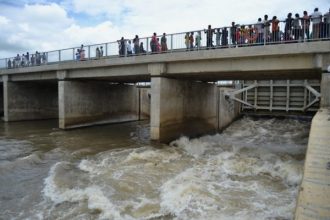Phalombe’s lessons of survival
Cyclone Idai hit Malawi, Mozambique and Zimbabwe hard during last year’s rainy season. Over 2 million people were affected with gushing winds and torrential rains that led to heavy flooding. Our Staff Writer KONDWANI KAMIYALA looks at how people in Phalombe are coping with the effects of the disaster, and looking ahead.

Malawi and other Southern African Development Community (Sadc) countries in the past week experienced a heat wave, with temperatures as high as 46 degrees celcius. For some, the scorching heat means one thing: Torrential rains should be expected.
A release from the Department of Climate Change and Meteorological Services puts it crudely on the heat wave from Sunday to Wednesday. The release, issued by the department’s director Jolam Nkhokwe indicates that all regions should expect a build-up of clouds with high chance of thundery showers to be accompanied by strong winds.

“The occurrence of thunderstorms will usually be associated with strong winds, thunder and lightning caused by protracted heating of the atmosphere and can cause damage to property and life,” reads the release.
As the heatwave strikes, with thoughts of looming strong winds likely to cause damage to property and loss of life, group village head Thunga in Traditional Authority (T/A) Kaduya’s area in Phalombe is disturbed.
Her village was heavily hit by Cyclone Idai during the last rainy season, so another potential disaster is the last thing on her mind.
“We were hit hard last season. Over 300 households were affected in my area. With this great heat, which makes us walk around with no shirts on, we can only fear for the worst this rainy season.
“We can build houses on high ground as advised, but when disaster strikes, we will suffer again,” she said on Wednesday.
Cyclone Idai and Kenneth hit Mozambique between March and April 2019, killing hundreds of people. The cyclone also caused significant flooding, damage and destruction.
The 170 kilometres per hour gushing winds rendered in total over 2.6 million people in Malawi, Mozambique and Zimbabwe homeless.
The cyclone destroyed houses, hospitals, schools and farms, damaging roads and washing away bridges.
In Phalombe alone, 846 households in T/As Jenala, Nkhulambe, Kaduya and Mkhumba were affected, displacing 5 000 people.
Samson Manjolo from Namasoko Village in T/A Mkhumba’s area recalls how his house collapsed and how his crops were washed away.
He looks back: “It was bad. Normally, I harvest 10 bags of maize, but last year I only got one and a half bags. The pangs of hunger hit us real hard.”
Godffrey Matitha, from Kuchombe Village in T/A Mkhumba’s area says apart from schools, houses and crops being washed away, even graveyards were affected. For him, massive deforestation of the Nalijiri Hill, which is on the eastern side of the village, led to an increase in run-off.
“My yield dropped from 20 bags to seven. The vegetation cover on the hill is all gone. The gullies are deep. There was no way ourcrops could have survived,” says Matitha.
The voices of the Phalombe villagers resonate the United Nations Development Programme (UNDP) observation that it is small communities that are likely to be the most severely affected by climate change impacts and yet are least equipped to cope and adapt.
In response to this, UNDP supports community-based projects that seek to enhance the resiliency of communities, and the ecosystems on which they rely, to climate change impacts.
A humanitarian organisation Oxfam is taking that approach in Phalombe, among other districts not only to avert the effects of the disaster, but also prepare them as the rain clouds gather and prospects of heavy rains loom high.
For instance, Oxfam engaged villagers in Mwenyewe Village to construct a dam, which will help villagers harvest rain water and run-off water from the Sombani River when it swells. The 237 villagers formed Ulesi Siupindula, a group that cultivates on a 12-hectare land.
One of the villagers, Luka Machapa says Cyclone Idai taught him one thing: Climate change is real, hence the need for means to cope. One of the adaptation measures, he affirms is the construction of the dam.
“The weather pattern these days is like mad. At times we have dry spells and like last year, we had heavy rains. To make it worse, fall armyworms last year attacked our crops. The construction of the dam will help us harvest water which we will use to irrigate our maize, tomato and eggplant fields,” he says.
Oxfam engages villagers like Machapa for 21 days and get K21 000 in the cash for work project. Unlike Mwenyewe villagers who chose the construction of a dam, villagers in Kuchombe chose a land conservation and afforestation project.
Group village headman Kuchombe said his 164 subjects constructed 174 check dams, known locally as donga, on the slopes of Nalijiri Hill. The check dams will control the flow of water from the hill and reduce flooding.
Oxfam provided sand and cement for the construction of the check dams, and paid the villagers for the work.
“The flooding affected us greatly. Our houses, crops and graves were washed away. The check dams, we hope, will help reduce the water speed downhill. In fact, for two years now, we have embarked on the reforestation of the hill since we have suffered a lot,” said the chief.
Samuel Meya, Oxfam’s Phalombe field manager, says the cash transfer project complements the humanitarian aid—maize, cooking oil, beans and farm impliments—the organisation gave victims of the cyclone.
“People were vulnerable. And, I daresay, they are still vulnerable to the adverse effects of climate change. As we go into the lean period, the people need food and they can buy that after the piecework,” says Meya.
According to him, 2 700 people in Mkhumba and Kaduya’s area have benefited under the K94 million project.
As the Phalombe people pick up the pieces and get back on their feet, it is evident climate change poses a threat against development as it drags people into grinding poverty.





